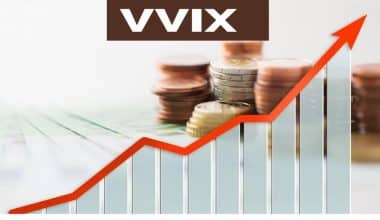As much as it’s super cool to be your own boss and take up the responsibility of running a business, you’ll have to figure out your retirement plans, and the earlier you start working towards them, the better. Many financial institutions, such as Vanguard, Fidelity, and others, offer self-employed people retirement plans that are flexible, easy to use, and also defer tax. Although each of them is unique, they offer flexible investment options too, whether you have employees or not. Let’s check out some of the best options for sole business owners when it comes to retirement plans.
Can You Have a Retirement Plan if You Are Self-Employed?
Sure, you can. People who work for themselves can plan for their retirement using the different plans for small business owners.
What Is the Best Retirement Plan if You Are Self-Employed?
Simple employee pension (SEP) IRAs. If you’re self-employed and don’t foresee yourself ever hiring people, but you still want to save as much as possible for retirement, a SEP IRA may be the best option for you.
Best Self-Employed Retirement Plans
People who earn a modest living from self-employment are better off investing in a Traditional IRA or a Roth IRA when it comes to retirement plans.
Individual Retirement Accounts (IRAs)
Generally, IRAs are for anyone who earns an income and wants to save towards retirement.
There are two types of IRAs: the traditional IRA, which provides a tax break when contributions are made, and the Roth IRA, which allows withdrawals to be made tax-free once retirement income is received. IRA contributions may cut your personal tax burden, but the IRS does not consider them a business expense.
Establishing an IRA is simple, and once it’s done, you have a lot in terms of how and where you invest your money.
In 2023, the maximum individual IRA contribution is $6,500, with a $1,000 catch-up contribution for those 50 or older.
Finally, unless there are exceptional circumstances, withdrawals made before the age of 59½ are subject to a 10% penalty.
Simplified Employee Pension IRA (SEP IRA)
If you’re self-employed and don’t plan to hire anyone soon, a SEP IRA may be your best retirement savings option. SEP IRAs offer larger contributions and tax benefits than conventional IRAs.
Self-employed people can open Roth IRAs just like traditional ones. They can also contribute up to $66,000 in 2023, 25% of adjusted net earnings less half of Social Security and Medicare taxes.
Moreover, SEP IRAs are not mutually exclusive with other IRA accounts; you may still open and make contributions to traditional IRAs up to the annual contribution limits.
Savings Incentive Match Plan for Employees (SIMPLE IRA)
If you’re self-employed and planning to hire more than a handful of workers, a SIMPLE IRA might be your best option. SIMPLE IRA contributions are tax-deductible, and the plans are typically straightforward and cost-effective to administer. This program allows self-employed persons to save more as employers and employees.
In 2023, those who are self-employed can put away up to $15,500, and those who are 50 or older can put away an additional $3,500 as a “catch-up” contribution. The company will contribute 2% to the plan and the employee can contribute either 2% or 3%.
Roth IRAs have the same 10% early withdrawal penalty as conventional IRAs, escalating to 25% in the first two years.
If you have another retirement plan, you cannot contribute to a SIMPLE IRA. For the first two years of membership, you cannot roll over SIMPLE IRA funds to another plan.
Solo 401(k)
People who are self-employed and don’t have any other workers should look into solo 401(k) plans.
If you have employees other than your spouse, you won’t be able to make contributions to your Solo 401(k). The Solo 401(K) allows both “employer” and “employee” contributions, enhancing savings. A Solo 401(k) enables self-employed individuals to save more for retirement than they could with a SIMPLE IRA alone. Depending on their circumstances, individuals can opt to make deferrals that are tax-deductible or post-tax Roth deferrals.
These plans are harder to manage and offer fewer investment options than IRAs.
Can an LLC Have a Retirement Plan?
Yes. An LLC can open a Simplified Employee Pension (SEP) IRA for its employees. SEP IRAs are tax-advantaged retirement plans that were created with the intention of making it simple for small business owners, freelancers, and the self-employed to establish such plans for themselves.
Is Self-Employed 401K Worth It?
Small business owners or sole proprietors who wish to proactively save for retirement may find the solo 401(k) plan’s contribution and investment flexibility, as well as its comparatively modest administrative responsibilities, to be quite appealing.
Vanguard Self-Employed Retirement Plans
Vanguard offers a wide range of retirement plans and plans for small businesses. These plans can be used by people who work for themselves, as partners, or as employees. These include the SEP-IRA, the SIMPLE IRA, the Individual 401(k), and the Small Plan 401(k).
What is Vanguard Individual 401(k)?
The Vanguard individual 401(k) is a retirement plan designed for individuals and couples who are the sole employees of their business. It’s one of the many self-employed retirement plans that Vanguard offers.
Who Can use the Vanguard plan?
Self-employed individuals and business owners with no common-law employees and or spouses who work there. The proprietor can make contributions in the roles of both boss and worker. Moreover, C corporations, S corporations, and limited liability companies (LLCs) with no common-law workers are also welcome to join.
Vanguard i401k Investment Choices
Participants can choose from more than 100 different Vanguard mutual funds. Many of these funds are available in our cheaper AdmiralTM share class. Furthermore, there is no required starting sum.
Cost
The account creation process is free of charge, but each individual Vanguard 401(k) investment has a yearly fee of $20. However, if at least one plan member has at least $50,000 in qualified Vanguard assets, Vanguard promises to waive the cost for everyone in the plan.
Account Setup & Maintenance
An EIN, or employer identification number, is needed to set up a 401(k) plan for an individual. Your Social Security number will not be accepted. Request an EIN from the IRS via their website if you don’t already have one.
Once the value of your plan’s assets reaches $250,000 at the conclusion of your plan year or you terminate your plan, you must file IRS Form 5500 annually, even if you only have one participant. Each year, they give you resources to fill out the form easily.
Vanguard can help you with tasks like updating or restating the plan on a regular basis that may come up during plan administration.
Withdrawals & Loans
If you want to cash out your retirement savings, you must wait until a certain life event occurs, such as reaching the age of 59½ or the plan being terminated, your employment ending, or another event specified in the plan.
A 10% penalty may apply if you are under the age of 59½ and make a hardship withdrawal.
The Vanguard Individual 401(k) plan does not permit borrowing against the account value (k).
When you get a taxable distribution, you must file a tax return and pay regular income tax.
If you withdraw from your Roth Individual 401(k) after reaching age 59½ and if you have held onto the account for more than 5 years, you will not be subject to taxes or penalties.
What is a SEP-IRA?
Anyone who is self-employed, the owner of a firm, hires employees or receives income from freelancing can benefit from the Vanguard SEP-IRA (Simplified Employee Pension) retirement plan because it’s easy to manage.
Who Can Use the Plan?
The SIMPLE-IRA is mandatory for employees who are 21 or older, make at least $750 in the tax year, and have worked for you for at least three of the preceding five years. If you like, you may establish looser qualifications for participation.
Investment Choices
There are more than a hundred different Vanguard mutual funds, many of which are available in our low-cost AdmiralTM share class and are available to participants. Furthermore, there is no required starting sum.
Who Can Use the Plan?
Just about anyone Employees qualify if they have earned $5,000 or more from you in any of the two previous years, and they may reasonably anticipate earning the same amount this year.
Increasing the number of qualified workers can be done by making the qualifications easier and lowering the minimum salary.
Which Is Better a Solo 401K or Sep?
The better of the two depends on whether you are contributing as an employee and employee or if you have other employees working for you.
A SEP IRA is similar to a traditional IRA in every way except that employees do not have the option of making elective contributions.
But a solo 401(k) allows you to contribute as both the employer and the employee, which is a major distinction. One of the limitations of a SEP IRA is that it can only be used to
Can I Set up a 401K if I Am Self-Employed?
Sure, you can. But then, first, ensure it’s the perfect plan for you.
Fidelity Self-Employed Retirement Plans
One of the best self-employed retirement plans you’ll come across is that of a Fidelity 401(k) account. Self-employed people, one-person businesses, and partnerships can save more money for retirement with the Fidelity 401(k) plans.
With the Fidelity 401(k) self-employed retirement plans, it’s simple to save for the future because it doesn’t charge account fees and also doesn’t require account holders to meet any minimums before opening an account.
Who Is Eligible for Fidelity Self-Employed Retirement Plans?
The Fidelity Self-employed Retirement Plans are made for businesses with only one owner and no other workers. If the owner’s spouse is a salaried employee, they are eligible to join the plan.
What Are Fidelity Self-Employed Fidelity Plans’ Tax Benefits?
Tax-deductible contributions, in-deferred growth, and pre-tax deferred contributions are among the tax advantages of Fidelity’s self-employed retirement plans.
Who Contributes to a Fidelity Self-Employed Retirement Account?
It’s funded by salary deferrals and employer contributions.
Can I Withdrawal From My Fidelity Self-Employed Retirement Plans?
Yes, but then, you must meet some requirements. Withdrawals from the plan are not permitted until a “trigger” event, such as reaching age 59 ½, becoming disabled, or passing away, has occurred. If you take a distribution before turning 59 ½, you’ll have to pay a 10% penalty.
What Are the Investment Options Available With Fidelity Self-Employed Retirement Plans?
A wide range of stocks, mutual funds, ETFs, bonds, and more.
How to Make Contributions With Fidelity
Contributions can be made by phone or by mail.
How to Open Your Plan and Establish an Account
In opening a Fidelity self-employment account, you must send the adoption agreement and at least one fully completed application for a self-employed 401(k) account to Fidelity to launch your plan.
Fidelity online plan establishment is for you if you fall under the following
- If you are a US Citizen
- You established a new strategy
- If you are an idea administrator and plan participant
- If you are naming your spouse as your primary beneficiary if you are married
If you Do Not Want To submit your document online;
- Download, print, and read the Defined Contribution Retirement Plan Basic Plan Document No. 04 (PDF).
- Next, download, print, and complete the Self-employed 401(k) adoption agreement (PDF) from their website
- Then, download, print, and fill in the trust agreement (PDF)
- Date and sign the adoption agreement and trust agreement and return the original forms to Fidelity Investments
- Always make backup copies of important documents and records when working on a business strategy.
- Fill out a 401(k) application for yourself and each owner (including the owner’s spouse, if appropriate) who will be contributing to the plan.
- Send the signed adoption agreement and the original account application(s) from Step 2 to Fidelity Investments PO Box 770001 Cincinnati, OH 45277-0036.
- Next, you should start making 401(k) contributions after establishing your self-employed 401(k) plan and any new account(s) (k).
How to Open Your Plan and Establish an Account
- You can use the sample 401(k) Salary Reduction Agreement Form (PDF). Fill it out yourself and have each participating owner (including the business owner’s spouse, if applicable) fill it out as well.
- Keep this form for your records and do not forward it to Fidelity.
Can I Roll Over My Other Asset Plans To Fidelity?
Of course, you can. Business owners who already have a retirement plan may be able to convert their savings into a self-employed 401(k) by way of a rollover or transfer. Prior to making any changes to your retirement plan, you should speak with a tax professional or benefits expert.
You may be able to transfer funds from the following plans into your self-employed 401(k):
- Profit Sharing, Money Purchase, and 401(k) plans
- SEP IRAs and SARSEPs
- SIMPLE IRA accounts after two years of SIMPLE participation
- 403(b) and governmental 457(b) plans
- Traditional IRAs
When Are the Deadlines for Fidelity Retirement Contributions?
When it comes to your profit-sharing contributions from work, the deadline is the same as the company’s tax-filing deadline (including any extensions) for the current calendar year, plus any applicable deadlines for the employees’ own personal tax returns (for unincorporated businesses, this date is usually April 15 of the following year, plus any extensions).
However, the owner-only 401(k) plan’s deadline for depositing employee salary deferrals is often the same as the tax filing deadline, plus any extensions.
Also, people who own a corporation (and their spouses) are required by law to submit a written wage deferral election before the end of the tax year.
A pay deferral election must be made in writing by the end of the tax year if you are an unincorporated business owner.
Related Articles
- RETIREMENT STRATEGIES: Best Strategies to Help You Save Money for Retirement
- TAXABLE BROKERAGE ACCOUNT: Understanding Taxable Brokerage Account And How It Works
- 401k Contribution Limits 2023: A Comprehensive Listing & All You Need(Updated)
- SELF EMPLOYED 401K: Definition, Limit & How to Get It
- SEP Plan: Meaning, Types, and Rules






